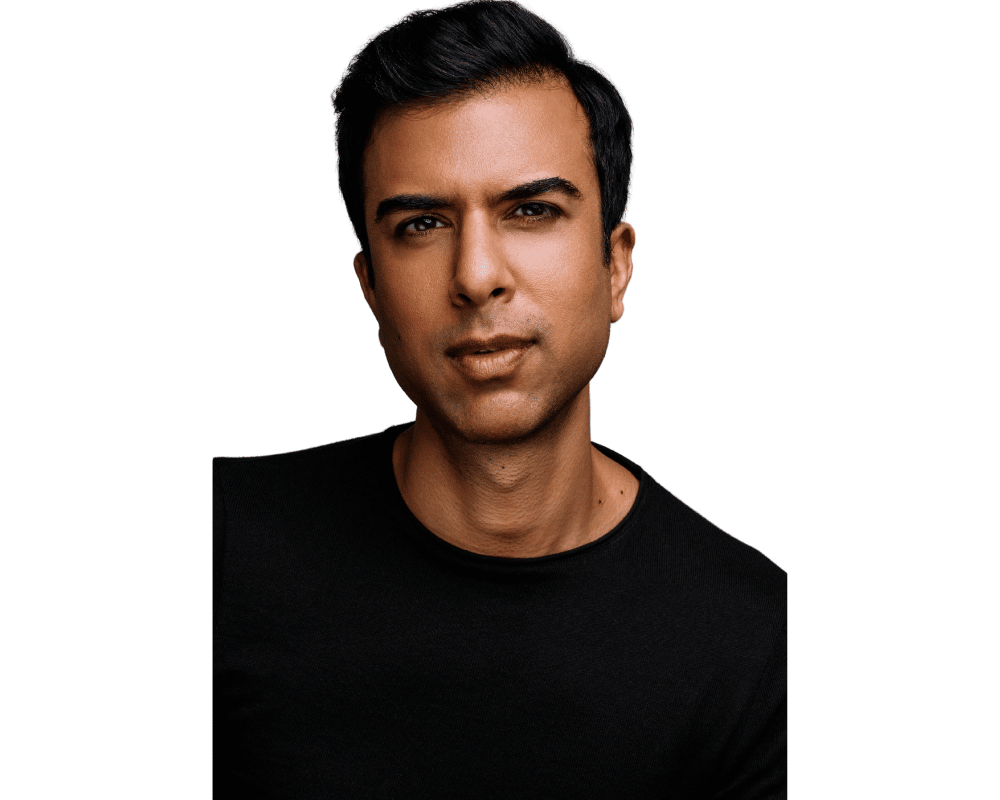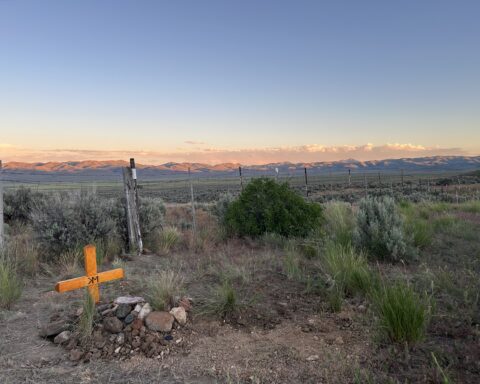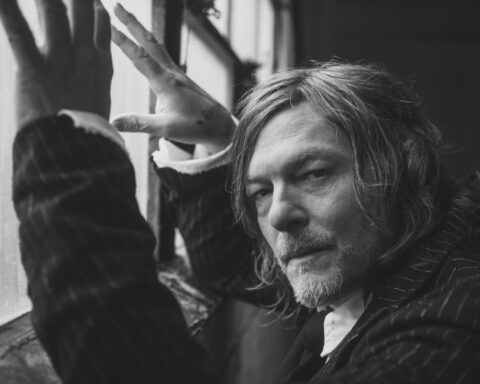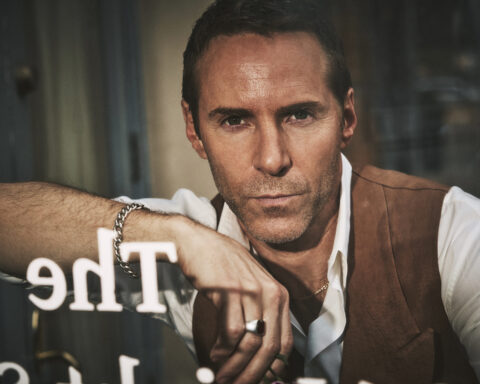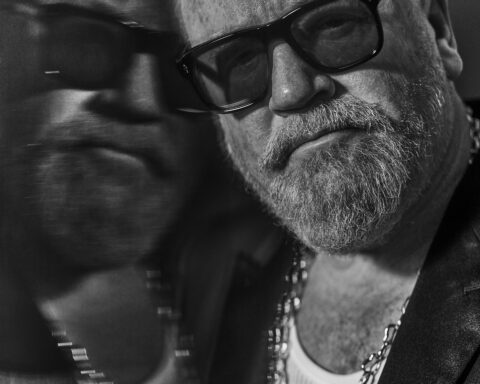Soman Chainani is writing fairy tales for the TikTok generation. He’s trampling on traditional Disney stories, shaking up their moral compass, adding some blood and controversy, and sometimes letting the bad guys win. But in doing so, he could be playing his part in making the real world a more harmonious place.
Because as well as getting millions of middle-grade readers to pick up novels, Soman is also encouraging them to challenge stereotypes and embrace diversity. His fantasy book series ‘The School for Good and Evil’ has sold more than three million copies and been translated into 30 languages. It focuses on two seemingly familiar young female characters; the pretty, popular blonde Sophie and the gothic outsider Agatha, who are whisked off to attend the School for Good and Evil, a magical academy that trains children to become fairy tale heroes and villains. But when princess-loving Sophie arrives at the evil branch to learn the dark arts, while the cynical Agatha finds herself surrounded by handsome princes in the good school, the line between good and evil blurs.
The last of the six-book series was released last year, and a movie directed by Paul Feig, and starring Charlize Theron and Kerry Washington as the two school deans, has recently wrapped production and is to be released on Netflix in 2022. And next month, Soman releases his new book ‘Beasts and Beauty’ which is a reboot of the traditional fairy tales with diverse and modern twists, where Sleeping Beauty becomes a metaphor for gay awakening, and Snow White is ironically named, as she’s the only Black girl in the kingdom.
Here Soman tells Mr Feelgood why it’s so important to encourage young people to explore the gray areas that Disney sometimes avoids, with wisdom that has lessons for any of us trying to communicate more productively with the younger generation.

Soman with some young book fans // 📸 : Soman Chainani / Instagram
Tell us a little about what sets ‘The School for Good and Evil’ apart from other children’s books?
I grew up a child of Disney. It wasn’t like it is now, where kids have video games, Netflix and 500 channels. Disney was this unifier, especially for an immigrant family. If you needed something to do, you would just stick on a Disney movie, and I remember watching them over and over, like hundreds of times. They would sort of brainwash you, because that was all that was in the house. So that was the way I learned about good and evil, all those Disney tropes of the good guy looking a certain way, the evil guy looking a certain way, the structure, the storytelling, everything. And then, when I went to college [at Harvard], I ended up in this fairy tale seminar with a professor named Maria Tatar, who is the world’s leading expert on on fairy tales. I was shocked to read the original stories, because we grew up thinking Disney just pulled them off trees, and I realized that not only is my childhood kind of based on this lie, but we internalize this structure of good and evil, especially here in this country, and I think it warps our entire perspective. I can even trace the insane polarization in our politics to the Disneyfication of fairy tales and taking away those shades of gray.
So that’s where ‘The School for Good and Evil’ came from. This desire to get kids out of this ‘good guy, bad guy’ structure and mindset. We’re not going to label who the good guy or bad guy is necessarily, characters can switch sides, and things aren’t so clear all the way through. I’m just trying to bring back that kind of Grimm Brothers ambiguity to things, where you don’t know what’s going to happen, and there’s a lot more room for invention of what good and evil means.
Why do you think it’s important to help kids see these shades of gray?
I go into schools a lot, and one of the first questions I ask kids is, ‘When you go to the beach, do you like to build the sandcastle? Or are you the kid who waits for someone else to build it, so then you can destroy it?’ And what you start to realize is the group splits almost exactly into half, there are the kids who like to destroy things, and the kids who like to build things. It’s just the way we are by nature. But I think what happens is the kids who create things are called the good kids, and the kids who destroy things are called the bad kids. And that’s not necessarily how our world works, we need the kids who destroy things, because they like to take things apart in order to figure out how they work. That’s just their way of learning.
And also, if we try to force this model of goodness, and tell every kid, ‘This is the hero, this is the villain,’ it sort of gets rid of their ability to read a story and feel something for real, they’re just identifying with the labels we give them. We’re presenting it as black and white, when there are so many more shades. I think my job on Earth is to bridge that gap between what kids are really feeling and what they’re told to feel when it comes to fairy tales. So they can have that same experience that an adult has when they watch ‘Game of Thrones’, that they can go in and feel slightly unsteady. And at the end of the day, the only thing they can trust is their own heart and emotional response to things. They are allowed to love whoever they love as a character, there’s no wrong answer.
When I was young I was always rooting for the villain in the Disney movies. In ‘The Little Mermaid’, I thought that Ursula should win and Ariel should die. It was a running joke in my family, and my parents thought I had this mean streak. But then when I got older and went back to these stories, I realized that I was right! In the Grimm story, the little mermaid dies in the end and the sea witch survives!

Soman visits a school in Texas // 📸 : Soman Chainani / Instagram
What do you think we can we all learn from your success connecting with young people through your books, as we try to communicate better with our children and the younger generation?
I don’t talk down to younger people, I don’t see it as my role to preach to them. Roald Dahl had this quality, where you just don’t see kids as kids. Kids just operate at the most pure emotional level, so you have to tell them the truth. Anything that feels slightly patronizing, they will reject. Especially in this day and age, kids are exposed to everything. TikTok itself is R rated, and they’re on it 24 hours a day. Often the conflict I have with my publisher more than anything in the process of writing a book –– and I usually come out on top, which is the reason that the books have been successful –– is: Where’s the line? Where’s that line of what can a kid handle. I always err on the side of they can handle a lot more than you think. Especially on the page, because on the page, they’re limited by their own imagination. I want them to be able to see all sides of a story and take from that what they want.
And there’s a more basic goal you’re achieving here, right? Which is just getting young people reading books.
Yeah, you have to suck them in, and you have to really entice them. Because saying a kid needs to read for 30 minutes in order to play their video game, or use TikTok, is only going to get you so far. I think you have to be able to get them to want to pick that book up on their own. And the only way you’re going to do that is by giving them that same kind of thrilling stimulation and allure. The thing they love in a video game, or on TikTok, is the thrill of the unexpected, something they’re not anticipating. So what I’m always trying to do, in any book I write, is to kind of jolt them a little out of their comfort zone, then use that little bit of shock to explore deeper themes.

Kerry Washington, Paul Feig and Charlize Theron on set of The School for Good and Evil // 📸: Paul Feig / Twitter
The upcoming Netflix movie is very exciting. Have you had much involvement in that process?
It has been such an interesting process. We’ve been through a lot, Universal picked it up in 2013, then we had a bit of an executive shuffle and things change, and it ended up going to Netflix. In the course of those seven years, there’s been nine writers. And I was sort of the thread all the way through, that had to be the onboarding guy for each writer. And I wrote the first two drafts of the script. So I think I’ve been a lot more involved than many authors are. Film is my background, I went to film school first and trained as a director and screenwriter, so film is actually my natural language. When they brought Paul Feig on to direct, he’s been ultra collaborative and could not have been more respectful of the books and the fans. So I spent a few weeks on set in Belfast, back in April, and I’ve met everyone and become quite good friends with a lot of the cast and crew. Paul’s a genius, I can’t imagine anyone else having made this movie.
Tell us about your new book, ‘Beasts and Beauty’, which comes out next month. I know it’s a more diverse take on the traditional fairy tales, how important is it for you have that inclusivity in your work?
I had been in ‘The School of Good and Evil’ world for 10 years. And by the end, the pressure of the fanbase was getting bigger and bigger. Each book you’re trying to better yourself, and after six your brain is exploding, because by the end there were 150 characters, 70 plotlines, it was so huge and hard just trying to organize that story. The last book came out last year, and originally I was just going to take a year off and go to a tennis academy in the south of France, as tennis is my other love. But then the pandemic happened, and I thought, ‘Alright, how am I gonna entertain myself at home?’ So I went back to the original fairytales that started all this, and redid them, as if I was the Grimm Brothers and I knew what was coming and what kids needed to be taught. So Sleeping Beauty is about a boy who wakes up every day, feeling like he’s been drained of blood. And it turns out that there’s another boy feasting on him in the night, and it’s kind of this gay awakening metaphor. Snow White’s about the only black girl in the kingdom. And Beauty and The Beast is now about an Asian immigrant family. And so every story opens up the world in a way that is more natural to the way that we see it now.
I grew up in Key Biscayne, off the coast of Miami, and I used to joke, through tears, that I was the only brown kid on the island. And so that feeling of being different is very much baked in. And so when I go to write a story, I’m always looking at it from the feeling of difference. Even when I write white characters, I think about what makes them feel different, what sets them apart. Everyone of my characters is a little bit of an outcast, even the hunky prince feels lonely and like he has no friends.


